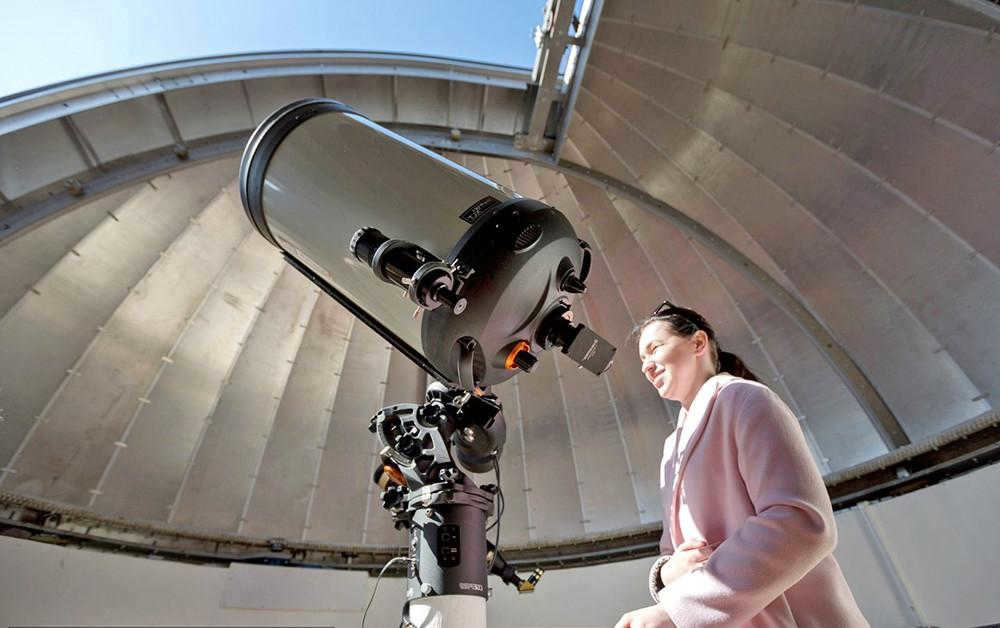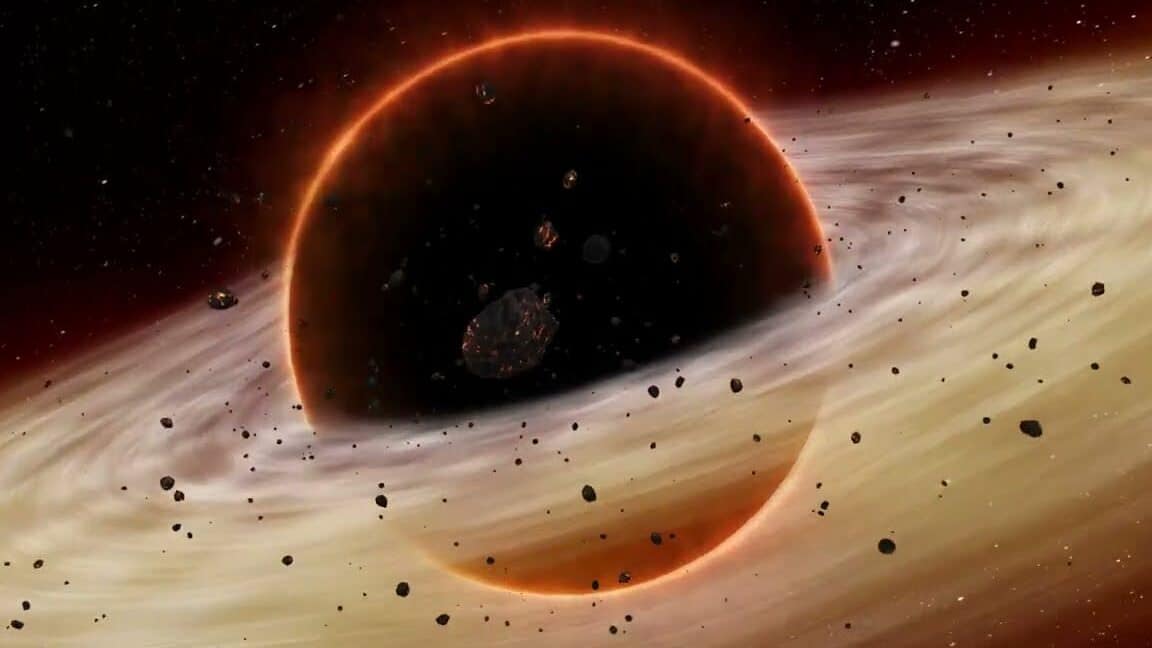Black holes have long captivated the minds of scientists and astronomers, standing as enigmatic entities within the vast expanse of our universe. Their immense density exerts a gravitational force so powerful that not even light can escape their clutches. These cosmic phenomena come in various sizes, ranging from relatively small to supermassive giants, boasting masses equivalent to millions or billions of suns. One crucial characteristic of black holes is their event horizon, a boundary in space where light is forever trapped. Crossing this threshold leads to an inescapable fate – a journey towards the heart of a singularity. But what lies beyond the event horizon? What awaits those who venture into the depths of a black hole? The answer to this mind-boggling question, known to physicists, promises an exhilarating revelation that will surely ignite your imagination.
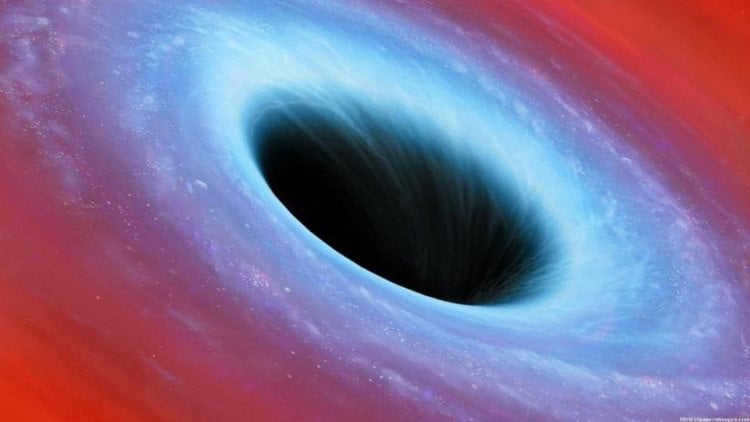
The contents of a black hole are still a mystery.
In the center of our galaxy, there are stars orbiting around a massive object with a mass of 4 million times that of our sun. This object, known as Sagittarius A*, is a strong candidate for being a black hole, and we can observe it directly by studying the movement of the stars in its vicinity.
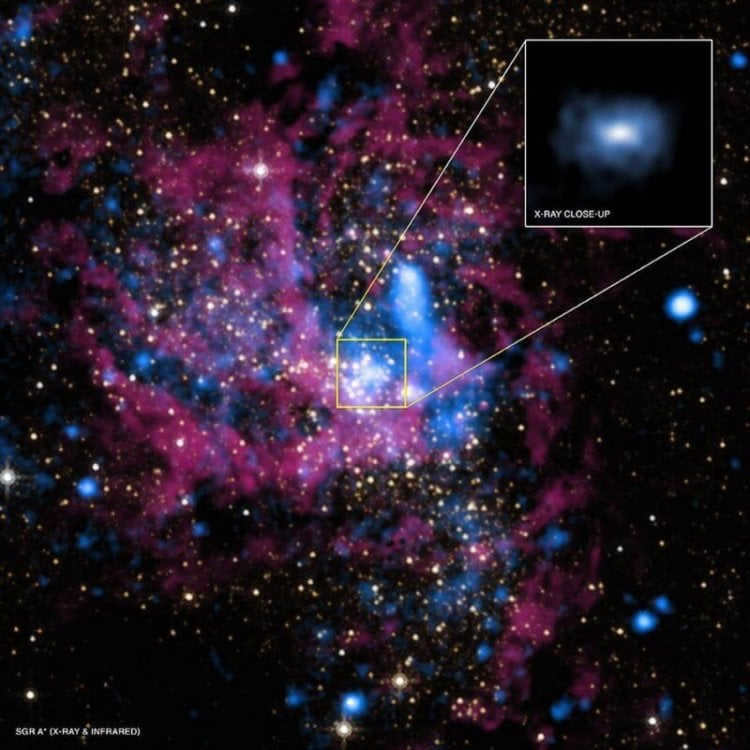

However, peculiar phenomena occur as one approaches the event horizon of a black hole, and they become even more bizarre upon crossing it. There is a rationale behind the fact that once you pass this imperceptible boundary, escape becomes impossible. The nature of the black hole, the spacecraft attempting to rescue you, or any other factor becomes irrelevant. The theory of general relativity is a weighty subject, particularly in the context of black holes. The reason lies in Einstein’s most significant achievement: the way in which a black hole distorts space-time.
Understanding the Mechanics of a Black Hole
When positioned at a significant distance from a black hole, the curvature of space is notably less pronounced. In fact, at such a distance, the gravitational pull exerted by a black hole is indistinguishable from that of any other celestial body, whether it be a neutron star, a typical star, or even a diffuse gas cloud. While the fabric of space-time may be warped, there is no discernible evidence of this phenomenon when observing from a great distance. The only observable characteristic is the presence of mass, with no information regarding its distribution. However, upon closer inspection, instead of perceiving a cloud of gas, a star, or a neutron star, one would see a completely dark sphere at the center, devoid of any emitted light.
The event horizon, which is a spherical region, is not a physical object but a space region of a specific size that light cannot escape from. When observed from a distance, a black hole appears to be its actual size. In simpler terms, if you approach a black hole closely, it will appear as a completely black sphere in contrast to the background of space, with light being distorted at its boundaries.
If we consider a black hole with the mass of Earth, this sphere would be extremely small, with a radius of about 1 centimeter. On the other hand, for a black hole with the mass of the Sun, this sphere would have a radius of approximately 3 kilometers. If we scale up the mass (and size) to a supermassive black hole like the one at the center of our galaxy, the sphere would have the size of a planetary orb or a gigantic red star such as Betelgeuse.
What occurs if you enter a black hole?
So, what occurs when you approach and ultimately collide with a black hole?
From a considerable distance, the visual appearance will align with your expectations and calculations. However, as you advance in your flawlessly constructed and indestructible spacecraft, you will start to observe something peculiar as you come closer to the black hole. If you divide the distance between yourself and the star in half, the apparent size of the star will double. If you reduce the distance to one-fourth, it will become four times larger. However, black holes defy such expectations.
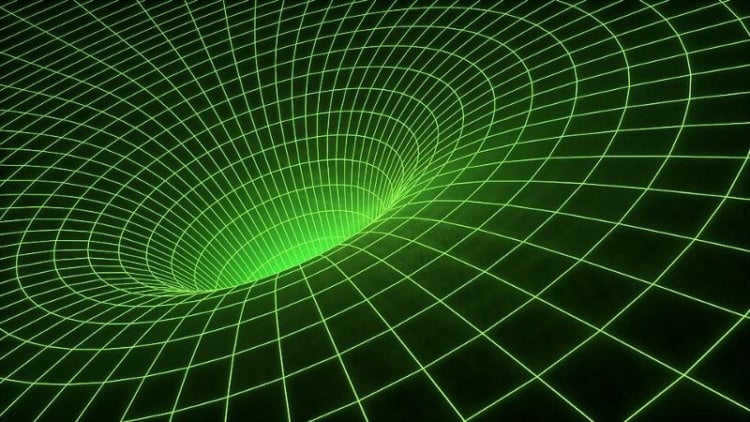
Unlike any other objects that you may encounter, a black hole exhibits a unique characteristic where it appears to grow in size much faster as you approach it. This is due to the incredible curvature of space surrounding the black hole.
From our vantage point on Earth, a black hole located at the center of a galaxy would appear minuscule, with its radius measured in micro arc seconds. However, when compared to the calculated radius within the framework of general relativity, the black hole would actually appear 150% larger due to the curvature of space. As you approach the black hole, the space-time continuum becomes increasingly warped, causing the event horizon to expand exponentially. By the time the event horizon reaches the size of a full moon in the night sky, it will have grown four times larger. This phenomenon is a direct result of the intense gravitational pull exerted by the black hole.
When you get close to the innermost stable circular orbit, which is 150% larger than the radius of the event horizon, you will observe that the forward view on your spaceship will turn completely dark. Once you pass this point, even the view behind you will start to darken. This phenomenon occurs because of the way light paths from different points move in this highly distorted space-time.
If you haven’t crossed the event horizon at this stage, there is still a chance to escape. By applying sufficient acceleration away from the event horizon, you can overcome its gravitational pull and return to a safe region of space-time away from the black hole. Your gravity sensors will indicate where the downward slope towards the center changes to a flat plane where you can see the light from distant stars.
What’s hiding within the enigmatic black hole
However, as you persistently descend towards the event horizon, the radiant starlight will progressively dwindle into a minuscule speck receding behind you, undergoing a mesmerizing metamorphosis into a vibrant shade of blue as a result of the profound gravitational blue shift. Just at the brink of crossing the event horizon, that minuscule speck will undergo a captivating transition, transforming into hues of red, then white, and ultimately culminating in a stunning shade of blue, as the celestial cosmic microwave and radio wave backgrounds seamlessly transition into the discernible part of the electromagnetic spectrum.
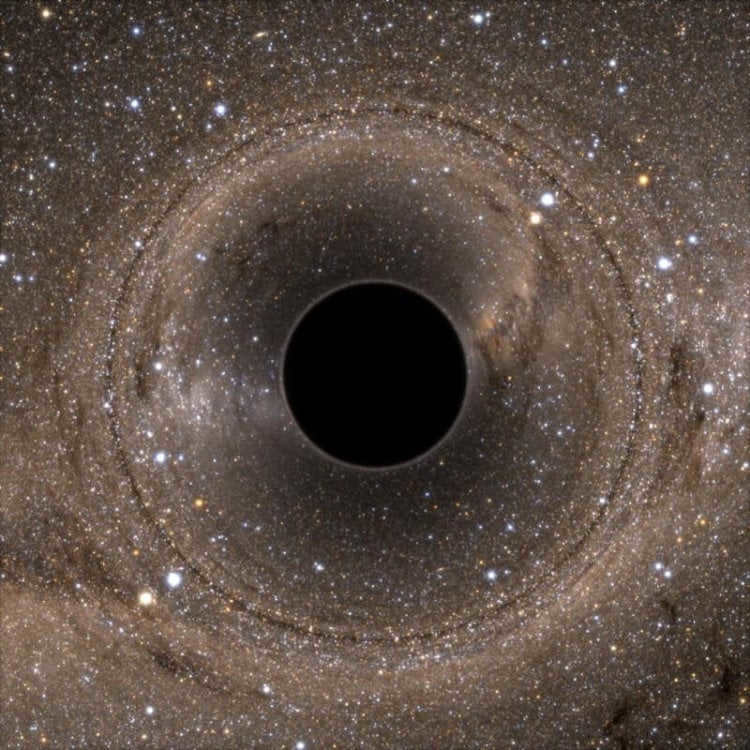
Within the depths of the black hole, an abyss of absolute darkness lies in wait.
And then… darkness fills the void. There is nothing. Enclosed within the event horizon, the light of the external universe remains forever out of reach for your vessel. Now you will recall the mighty engines of your spacecraft and contemplate how they might aid your escape from this entrapment. You will recollect the direction of the singularity and endeavor to gauge the gravitational gradient leading towards it. All of this, of course, assumes there is no other matter or light either behind or before you.
It’s incredible that even if a significant amount of light accompanies you over the event horizon – you will witness only “half” of the observable universe – you will also be equipped with gravity sensors. And once you pass through the event horizon, whether with or without light, something peculiar will occur.
Your sensors will indicate that the gravitational gradient leading towards the singularity will be present everywhere, in every direction, including the opposite direction of the singularity.
Is it possible?
Is it feasible? Yes, because right now you are over the event horizon, right in the middle of it. Any beam of light that you emit will only travel towards the singularity; you are too far inside the black hole for it to go elsewhere.
So, how much time does it take to reach the center of a supermassive black hole after crossing the horizon? Believe it or not, even though the event horizon may have a diameter of a light hour in our frame of reference, it only takes about 20 seconds to get to the singularity. The highly curved space is quite terrifying.
What’s worse, any acceleration will bring you even closer to the singularity at a faster rate. There is no way to extend your survival time at this stage. The singularity can be found in every direction you look. Resistance is futile.
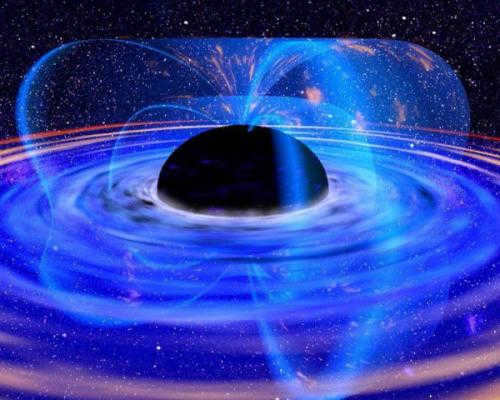
When you envision black holes, you likely envision incredibly dense and immensely massive regions of space that trap everything inside them, including matter, antimatter, and even light! Additionally, you may believe that they continuously consume anything unfortunate enough to cross their path, including dark matter. However, at a certain point, all black holes in the cosmos will not only cease to expand, but they will also start to diminish in size and lose mass until they completely evaporate! In this edition of our column, we will address a query from Paul zhuzhelsky, who inquires:
I have frequently encountered explanations of Hawking radiation that go something like this: “Pairs of virtual particles materialize near the event horizon. One of the particles falls into the black hole while the other escapes, carrying away a portion of the hole’s mass.” However, it is often mentioned in the fine print that this depiction is an oversimplification. And rightfully so, because if one of the particles were to fall into the black hole, the mass of the hole would have to increase by the mass of that particle. So, what’s the catch?
This is an incredibly intricate subject, but one that we have managed to comprehend. Let’s begin by delving into the nature of empty space.
According to the principles of the general theory of relativity, the interconnection between space and time results in the creation of a four-dimensional space-time fabric. If one were to eliminate all particles in the universe and move them an infinite distance away from a specific location, disregard the expansion of space, eliminate all forms of radiation, and remove the inherent curvature of space, it would be possible to declare the existence of a completely flat and empty space.
However, once you consider the fact that you exist in a universe governed by quantum field theory, you must acknowledge that even if there are no physical particles present, the physical fields that dictate their interactions still exist. Consequently, the concept of “Flat Empty Space” cannot be devoid of energy. Rather, we must conceive of “Flat Empty Space” as a quantum vacuum permeated with quantum fields.
Attention! If you happen to observe what you perceive as empty space at a specific point in time, it is important to consider that a moment is an extremely small interval of time. Due to the uncertainty principle, there is a significant level of uncertainty in the total energy present even in empty space during this moment. Consequently, it is theoretically possible for multiple pairs of particles and antiparticles to briefly exist, as long as they adhere to the established conservation laws of the physical universe.
We frequently hear the explanation that “Particle-Antiparticle pairs emerge and disappear in the Quantum Vacuum,” and while this explanation is visually appealing, it does not accurately depict the situation. In reality, there are no tangible particles present in this space. If a photon or electron were to pass through this region, they would not interact with any quantum vacuum particles. Rather, this description allows us to explore the inherent “shiver” of the quantum vacuum and understand that it contains a reservoir of virtual particles. These virtual particles contribute to the energy present in empty space, which can be represented as a sum of their fluctuations.
It is important to emphasize that there is an energy present in empty space itself, and it can be represented as the summation of quantum fluctuations within this space.
Let’s move forward. Let’s envision a scenario where space, rather than being flat and empty, is still empty but possesses curvature – meaning that there are variations in the gravitational field of space.
How would our quantum fluctuations manifest in this scenario? Specifically, if we allow space to distort due to the presence of a black hole, what would they appear like outside and inside the event horizon?
These are intriguing inquiries, and often, when seeking an answer, you’ll come across the following (incorrect) depiction, which captures the essence of Paul’s question:
Therefore, if we imagine particle/antiparticle pairs as actual entities, and if one manages to escape from the black hole while the other gets trapped beyond the event horizon, it would result in an increase in overall energy in the universe: half outside the black hole and half adding to the mass of the black hole. However, it is important to note that these particle/antiparticle pairs are not real and serve only as a means of visualizing and calculating the energy inherent in space.
The reason behind this is that in curved space, as we have previously discussed, there exist fluctuations in the gravitational field. We utilize these fluctuations to help visualize the energy present in empty space. However, it is possible for fluctuations to originate beyond the event horizon and enter it before they can re-annihilate. Nevertheless, it is impossible to extract energy from empty space without some sort of compensation. Therefore, each time a virtual particle (or antiparticle) falls inside the black hole, a real photon (or a group of photons) must appear to balance out the energy. This real photon then escapes the event horizon, carrying away energy from the black hole.
The previous visualization method we used, where one particle of a pair falls while the other one escapes, is overly simplistic and not entirely accurate. It is not the particles or antiparticles themselves that contribute to the shrinking of black holes, but rather the photons that correspond to the blackbody spectrum.
I prefer a more refined visualization, although it is still somewhat simplistic. Imagine quantum fluctuations, where every time a particle-antiparticle pair is formed, with one falling inside the black hole, another particle-antiparticle pair is simultaneously created, with one of them also falling inside. The particle-antiparticle pair that remains outside annihilates, emitting real photons, while the pair that falls inside removes an equivalent amount of mass (E=mc^2) from the black hole.
While this analogy is not perfect (since it is just an analogy), it does illustrate the fact that photons are left behind at the event horizon, which is consistent with Hawking radiation predictions. In fact – although calculations in quantum field theory within curved space-time would be necessary to confirm this – Hawking radiation predicts that the photon spectrum would resemble that of a perfect black body with a temperature given by:
This would result in a temperature of less than one microkelvin for a black hole of the same mass as the sun, less than one picokelvin for the black hole at the center of our galaxy, and only a few tenths of an attokelvin for the largest known black hole. The rate of reduction corresponding to this radiation is so small that black holes will continue to grow, even if they absorb one proton within a timescale comparable to the age of our universe – this process will persist for approximately 10^20 years.
Eventually, black holes with a mass similar to that of the sun will begin to lose more energy than they absorb due to Hawking radiation, on average, and will completely evaporate within 10^67 years, while the largest black holes will take around 10^100 years to evaporate. Although this may be well beyond the current age of the universe, it is not an eternity. Furthermore, black holes will continue to shrink due to Hawking radiation, emitting photons in the process.
Consequently, empty space possesses a zero-level energy that is not equal to zero, and within the curved space at the event horizon of a black hole, a low-energy spectrum of radiation resembling that of a perfect black body emerges. This radiation gradually removes mass from the black hole and causes a slight contraction of the event horizon over time. Therefore, if you insist on visualizing the source of this radiation as particle/antiparticle pairs, it is more accurate to represent two pairs at once. In this way, the particle from one pair and the antiparticle from the other pair would annihilate, generating real photons that escape the black hole, while the other virtual particle pair falls into the black hole and absorbs its energy (or mass). Source: Geektimes. ru.
Astronomers have indirectly observed rotating black holes in our universe. The center of a black hole, known as singularity, remains a mystery.
Rotating black holes cause a different distortion of space compared to stationary black holes.
This distortion process is called “inertial frame entrainment” or the Lense-Thirring effect. It not only distorts space but also space-time around the black hole. The black hole depicted in the movie closely aligns with the scientific concept.
- The spaceship Endurance is on its way to Gargantua, a fictional supermassive black hole with a mass 100 million times greater than that of the Sun.
- Gargantua, located 10 billion light-years away from Earth, is surrounded by a number of orbiting planets. The astonishing thing about Gargantua is that it is spinning at an incredible speed of 99.8 percent of the speed of light.
- The accretion disk of Gargantua consists of gas and dust, with a surface temperature similar to that of the Sun. This disk provides light and heat to the planets orbiting around Gargantua.
The reason for the intricate appearance of the black hole in the movie is the gravitational lensing effect, which distorts the image of the accretion disk. As a result, two arcs are visible in the image, one above the black hole and one below it.
Who Discovered Black Holes? Beyond the Horizon
Black holes, those enigmatic and fascinating entities, were first discovered by scientists who dared to venture into the depths of the universe. These celestial wonders are concentrated in a highly curved region of space-time, creating a self-sustaining gravitational field (image from www.science.nasa.gov)
A black hole defies categorization, as it is neither matter nor radiation. It exists as a captivating gravitational force, existing within the confines of a heavily curved area in space-time. Its outer limits are encapsulated by a closed surface known as the event horizon. In the absence of stellar rotation before collapse, this surface takes the form of a regular sphere, with a radius equivalent to the Schwarzschild radius.
The physical significance of the horizon is quite apparent. A light signal transmitted from its outer vicinity has the ability to travel an infinite distance. However, signals emanating from the inner vicinity will not only fail to cross the horizon, but will inevitably plunge into the singularity. The horizon serves as a spatial boundary between events that can be observed by astronomers on Earth (or any other location) and events for which information will never escape, regardless of any circumstances.
According to Schwarzschild, the gravitational pull of the black hole decreases as the distance from the event horizon increases, following an inverse square law. This means that for an observer far away from the black hole, it appears to be a regular massive object. The black hole also retains the angular momentum and electric charge of the collapsed star. However, all other properties of the original star, such as its structure, composition, and spectral class, are lost and forgotten.
The true nature of black holes
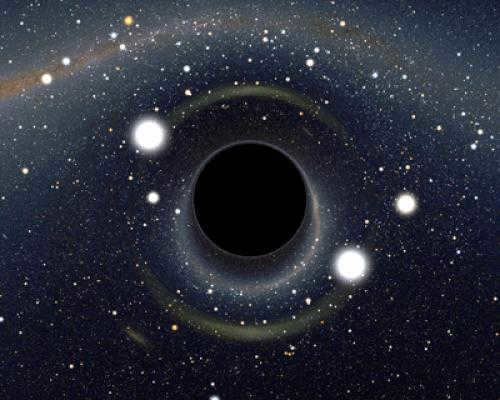
In simple terms, a black hole can be described as a region in space-time with an incredibly strong gravitational pull that prevents anything, including light particles, from escaping.
Originally, a black hole was a massive star. While the star’s interior maintains a high pressure through thermonuclear reactions, everything remains stable. However, as the star’s energy supply diminishes over time, its own gravity causes it to shrink. The final phase of this process is the collapse of the star’s core and the formation of a black hole.
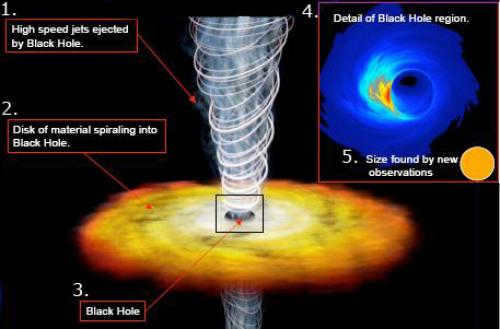
- 1. A black hole ejects a jet at high speed
- 2. The matter disk grows into a black hole
- 3. A black hole
- 4. A detailed diagram of the black hole region
- 5. The size of the newly discovered observations
The prevalent theory suggests that such phenomena exist in every galaxy, including the core of our Milky Way. The immense gravitational force of a black hole can keep multiple galaxies in its vicinity, preventing them from drifting apart. The extent of this “coverage” can vary, depending on the mass of the star that collapsed into a black hole, and it can span thousands of light-years.
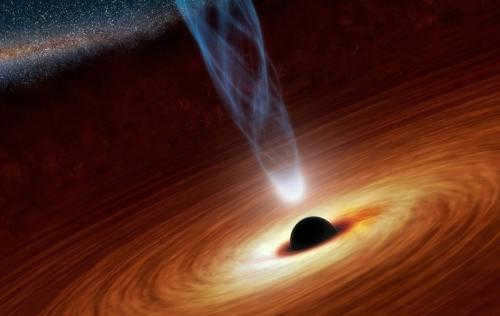
Unbelievable Discoveries about Black Holes in Video Format
The Existence of White Holes: Theories and Implications
Let’s consider the possibility of white holes actually existing. Where do they originate from and what impact would their formation have on humanity?
Imagine a black hole, a cosmic entity formed solely through the passage of time. Now, envision its complete opposite – a white hole. Here are some key points to ponder:
- While black holes possess immense gravitational forces that attract matter towards them, white holes, in theory, would repel matter away from them.
- Just as it is impossible to escape the event horizon of a black hole, it would also be impossible to enter the event horizon of a white hole.
- A collapsar consumes matter and consequently emits energy – whereas a former hole emits matter and consumes energy, etc.
In the cosmos, the existence of a collapsar has remained a mystery for a long time. Meanwhile, the formation of white holes in the universe has remained a speculative hypothesis.
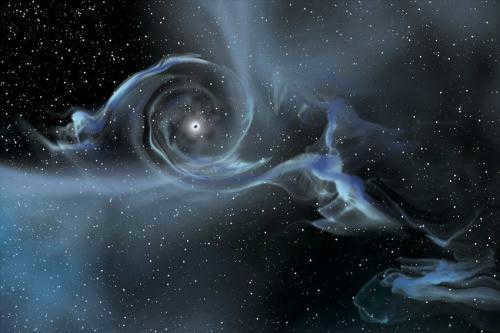

However, a team of Israeli researchers claims to have captured an image of a white hole resembling a sudden burst of light. The unique features of this hypothetical white hole flash distinguish it from previously observed stellar explosions. Scientists speculate that the rapid disintegration of a white hole is reminiscent of the Big Bang, albeit on a much smaller scale. This explosive event has been dubbed the “Small Explosion,” as it releases a significant amount of energy and matter seemingly out of nowhere. It’s as if everything that was once contained within is forcefully ejected.
Undoubtedly, just like in any speculative hypothesis, there exist individuals who have absolute certainty regarding the existence of white holes. A group of scientists at Aix-Marseille University in France are diligently endeavoring to elucidate to humanity that the concept of black and white regions in space-time has already been grounded in physics, incorporating the theory of quantum gravity loops.
Black Holes in the Universe: The Hypothesis of Physicists Suggests That Our Universe May Reside Inside a Black Hole
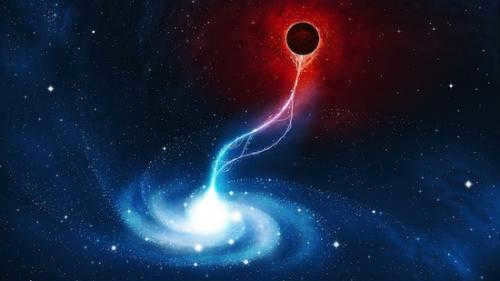
Physicists have been studying a peculiar theory for many years that suggests our universe exists within a black hole. This concept offers insight into various enigmas that the well-known Big Bang theory fails to address.
According to the Big Bang theory, the universe was in a singular state before it began expanding – meaning that an infinitesimally small point in space contained an infinitely dense concentration of matter. This theory provides an explanation for why the extremely condensed matter of the early universe started expanding rapidly and eventually formed celestial bodies, galaxies, and clusters of galaxies in space.
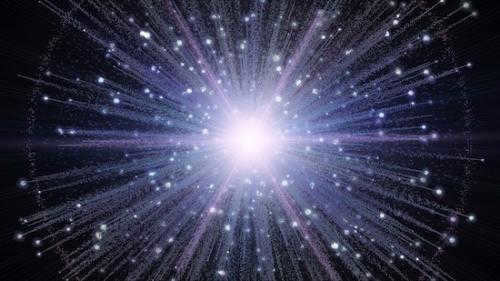
The hypothesis that our Universe exists within the confines of a black hole has the potential to address a plethora of inquiries. Furthermore, it merges the fundamental principles underlying two key theories in contemporary physics: general relativity and quantum mechanics.
General relativity, as a comprehensive framework, elucidates the behavior of the Universe on cosmic scales and offers an explanation for the way in which gravitational fields, generated by massive celestial bodies like the Sun, warp the fabric of spacetime. Conversely, quantum mechanics delves into the intricate workings of the Universe on the tiniest scales – at the atomic level. It takes into account essential characteristics of particles, such as their rotational motion, commonly referred to as spin.
The concept is that when a particle spins, it interacts with spacetime and imparts a property known as “torsion” to it. To grasp the meaning of torsion, visualize spacetime as a flexible rod. Curving the rod represents the curvature of spacetime, while twisting it represents the torsion of spacetime.
If the rod is very thin, it can be bent, but it will be challenging to determine whether it is twisted or not. The presence of spacetime torsion can only be observed in extreme conditions, such as the early stages of the Universe’s existence or in black holes. In these cases, it will manifest as a repulsive force counteracting the gravitational attraction caused by the curvature of spacetime.
According to the principles of the general theory of relativity, objects of immense mass conclude their lifecycle by undergoing a process of collapsing into black holes – regions within space that possess an intense gravitational pull, preventing anything, including light, from escaping.
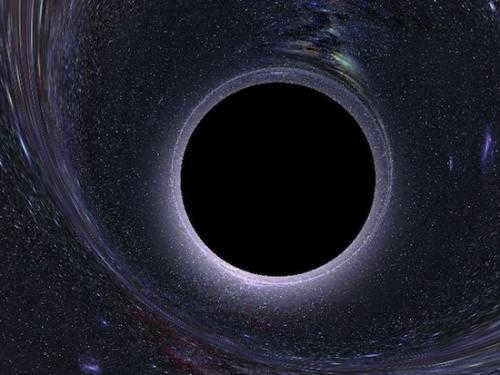
In the early stages of the universe, the attractive force of gravity, caused by the curvature of space, will overpower the repulsive force of torsion, resulting in the compression of matter. However, as torsion strengthens, it begins to hinder the contraction of matter to infinite density. Additionally, since energy can be converted into mass, the immense gravitational energy present in this state promotes the formation of particles, ultimately contributing to the growth of mass within the black hole.
Consequently, the torsion mechanism presents a remarkable scenario: each black hole has the potential to generate a brand new Universe within it.
The movement of matter in this scenario always takes place in a singular direction, giving rise to the concept of time flowing forward. The flow of time within our Universe is also inherited from the “parent” Universe.
Black holes are an inevitable outcome of Einstein’s theory of gravity, and they inspire fear for three distinct reasons. Firstly, they defy the laws of physics. Secondly, their immense gravitational force is terrifying. Lastly, their insatiable hunger is equally unnerving.
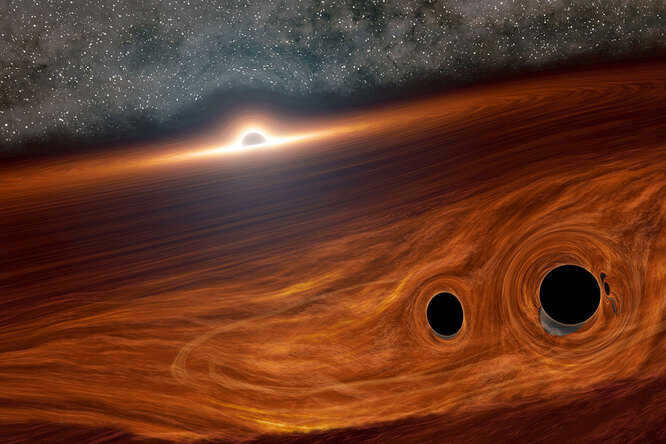
Because inactive black holes are as dark as the night, their detection is only possible when a star is in close proximity. It is the behavior of this star that enables astronomers to observe the obscured companion – a black hole. The initial confirmed instance of a black hole was Cygnus X-1, the most luminous X-ray source within the Cygnus constellation. Since then (since 1964), approximately 50 black holes have been identified, all of which have stars orbiting around them.
Essentially, black holes serve as the final resting place for matter. Nothing can escape their gravitational pull, not even light. The destiny of those who venture into a black hole is grim. This phenomenon is known as spaghettification, a concept introduced by Stephen Hawking in his book A Brief History of Time. In spaghettification, the immense gravitational force of the black hole would stretch and tear apart the bones, muscles, tendons, and even the very molecules of the human body.
It is advisable to maintain a safe distance, but if the quasar is in its active phase, the intense radiation it emits will scorch you.
How luminous is a quasar?
Picture yourself flying over a vast city like Moscow at night. You can see millions of lights coming from cars, houses, and city streets. Now, imagine those lights as stars within a galaxy. In comparison, an active black hole is like a light source with a diameter of 2-3 centimeters that outshines all the lights in the city, radiating hundreds or even thousands of times brighter. Indeed, quasars are the most brilliant entities in the entire Universe.
The physics and mass of black holes
Black holes are fascinating astronomical objects that have a tremendous mass. The largest black hole that has been discovered so far is an astonishing 40 billion times heavier than our Sun. To put that into perspective, it is about 20 times larger than the entire solar system. Furthermore, the rotational speed of a black hole is mind-boggling. While the outer planets in our solar system take 250 years to complete one orbit around the Sun, a black hole can make a full revolution on its axis in just three months. It’s incredible to think that the outer edge of a black hole is traveling at a speed that is only half the speed of light.
One of the most intriguing aspects of black holes is that they are completely hidden from our view beyond a point called the event horizon. At the center of a black hole lies a singularity, which is a point in space where the density becomes infinite. The conditions inside a black hole are beyond our comprehension because the laws of physics that we are familiar with do not apply there.
Falling into the abyss of a gravitational singularity
The encouraging update is that it is indeed possible to descend into a gargantuan black hole and emerge unscathed. Despite their immense gravitational pull, the tensile strength of these colossal celestial entities is comparatively feeble, rendering them incapable of inflicting mortal harm. In other words, they won’t be able to terminate your existence. However, the unfortunate reality is that once you pass the event horizon, there is no return. Crossing this point of no return is an insurmountable feat, preventing any possibility of sharing your extraordinary encounter with others.
According to Stephen Hawking, black holes go through a process of gradual evaporation. In the far-off future, when all stars have perished and galaxies have vanished from sight as a result of the universe’s accelerating expansion, black holes will stand as the final remnants, if one can call it that, of matter’s resting place. The most massive black holes will require an inconceivable amount of time to dissipate. The estimated duration is 10 to the power of a hundred, or a one followed by a hundred zeros. Therefore, the most terrifying entities in existence are essentially everlasting.
Our energy world is in a state of constant flux, resulting in the creation of lower level energy worlds through the resonance of higher level fractals. This means that the number of times the Universe has expanded and contracted remains unknown. The key factor in this process is the resonance of fractals at the level of parallel Universes, which serves as the catalyst for the emergence and clash between a black hole and a thermonuclear fusion reactor. It’s a fascinating chain of cause-and-effect relationships, starting with the resonance of parallel Universes, leading to the overcoming of the Coulomb barrier, and ultimately resulting in the formation of a thermonuclear fusion reactor. This reactor then gives rise to a black hole, followed by the development of an electromagnetic field, gravitation, centrifugal and centripetal forces, planets, stars, galaxies, and ultimately, universes and space. In just a few words, this encapsulates the fundamental structure of the universe.
The closest black hole can be found right here on planet Earth. While this black hole is smaller than the one residing within the Sun, it is a genuine black hole responsible for the creation of our planet. Similar to any other star or planet in our energetic universe, the Sun is a result of the interaction between multiple fractals that have achieved resonance. When I mention fractals, I am referring to parallel universes existing on different levels and in various vibrational states. When these oscillations reach resonance, the Coulomb barrier is surpassed between the fractals of such levels, resulting in a thermonuclear fusion reaction that produces all the known factors of this process. Consequently, a black hole emerges between the universes on one side and a new star on the other side. When the fractals are significantly smaller, planets are formed. This is how the structure of the Sun takes shape – it is a torus with a nearly aligned point of rotation, housing a black hole that triggers a thermonuclear fusion reaction. This reaction produces an electromagnetic field, gravity, thermal energy, and other properties associated with this process. Interestingly, recent images of the Sun’s pole have surfaced on the internet, validating this theory. Additionally, considering that our world is multi-level and fractal, all processes occurring on a larger fractal are similar to those on a smaller fractal contained within it. In other words, our planet Earth resembles the Sun but on a much smaller scale. Speaking of volcanoes, they serve as safety valves for the cooling system of Earth’s thermonuclear fusion reactor, in case the black hole exerts excessive pressure on the reactor’s electromagnetic field. The presence of helium-3 in volcanic vents confirms this. Water, along with all minerals, also originates from the fusion reactor. The attached photo depicts the northern pole of the Sun, where it is evident that the temperature approaches that of space. This indicates that the Sun is a torus with an almost centralized point of rotation, and what we actually see is the black hole, allowing us a glimpse into a parallel universe.
The energy world in which we exist is constantly changing and fluctuating. This is due to the resonance of higher-level fractals, which create energy worlds at lower levels. Universes are not created through explosions, but rather through the resonance of parallel Universes. Explosions only lead to the death of Universes, which typically occurs at the end of their lifespan. Therefore, we cannot determine how many times the universe has expanded and contracted. The Universe is finite and operates as a rational energy system. At its core, there is a rational energy system consisting of positive and negative elements, similar to a Moebius strip. However, the number of Universes is infinite.
The topology of the Universe resembles a torus with a nearly coincided center of rotation. It oscillates with a specific frequency and amplitude, and currently, our Universe is expanding. However, this changes based on the age of the Universe. In its youth, the Universe is more like a torus, almost flat like a pancake. In adulthood, it transforms into a torus with a nearly aligned center of rotation, similar to a sphere that is flattened at the poles. In old age, this torus contracts and becomes more like a dense ball. This is just before the explosion, which occurs when the resonance effect between Universes reaches its peak.
In an alternative scenario, the resonance effect diminishes, and the Universe transforms into inert matter that has lost its energetic impulse. Overall, our energetic world is multilevel and fractal. This means that while billions of Universes are being born in one place, billions of Universes are dying elsewhere. Since they are multilevel, these Universes exist in parallel and often cannot intersect with each other.
In the spring of 2019, the internet was buzzing with a photograph of a black hole, or more accurately, its “silhouette.” The scientific discovery behind this image was unveiled in a press conference that spanned six cities, from Washington, DC to Brussels and Tokyo. Let’s delve into the nature of black holes, what would happen to someone inside, their origins, and why they have captivated our imaginations for decades.
“The Celestial Deadlock”
A celestial abyss is an area of the universe that possesses such an immense gravitational force that it prevents any particles or electromagnetic radiation from escaping. This region’s perimeter is known as the event horizon.
From an astrophysical perspective, celestial abysses represent the ultimate phase of stellar development. These astronomical entities are compact in size yet possess an enormous mass, rendering them completely devoid of any light emission or other forms of electromagnetic waves. As an illustration, the celestial abyss located in the distant galaxy M87, which was recently captured by scientists, boasts a magnitude comparable to that of our solar system. In terms of mass, it surpasses the Sun by a staggering 6.5 billion times. Consequently, scientists classify celestial abysses based on their mass, distinguishing between those of stellar mass, intermediate mass, and supermassive proportions.
What is the process of black hole formation and disappearance?
Black holes are created as a result of the evolution of massive stars. When the hydrogen-helium “fuel” in the core of these stars is depleted, they begin to shrink. The fusion reactions that release energy can no longer sustain the star’s stability, causing it to collapse under its own gravity. This collapse leads to the formation of a massive, non-radiating object, which can be observed in close binary systems with the presence of an accretion disk formed by the matter flowing from a companion star.
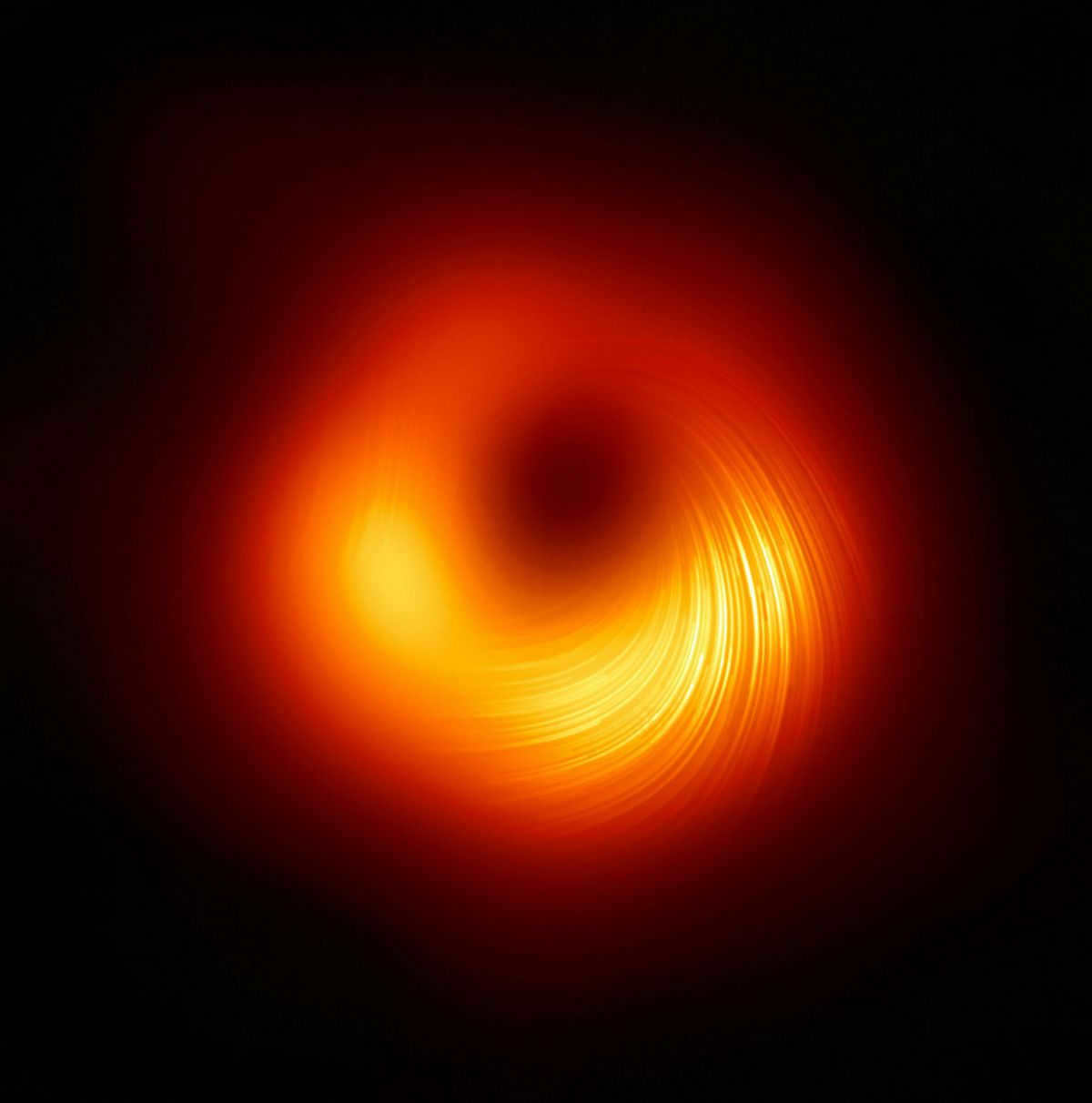
Massive black holes are created through the combination of smaller black holes situated at the cores of galaxies. This mechanism suggests that the resulting entity will have a mass roughly equivalent to the sum of the masses of its “predecessors”. These entities can also arise from the fusion of massive stars within star clusters.
The event horizon is ablaze with energy. Because of quantum phenomena, it generates torrents of particles expelled into the encompassing void. This occurrence is known as “Hawking radiation” – named after the British theoretical physicist Stephen Hawking, who elucidated it. Notwithstanding the fact that matter is unable to traverse the event horizon, the black hole, nonetheless, slowly “dissipates”. Eventually, it will ultimately shed its mass and vanish.
It remains a mystery to scientists what lies in store for an individual who becomes ensnared within the event horizon. Will they be consumed by the immense gravitational pull of the black hole or subjected to the harsh forces of tidal disruption? Alternatively, might they chance upon a hidden passage leading to the back of a bookshelf, much like the characters in the renowned American science fiction film Interstellar?
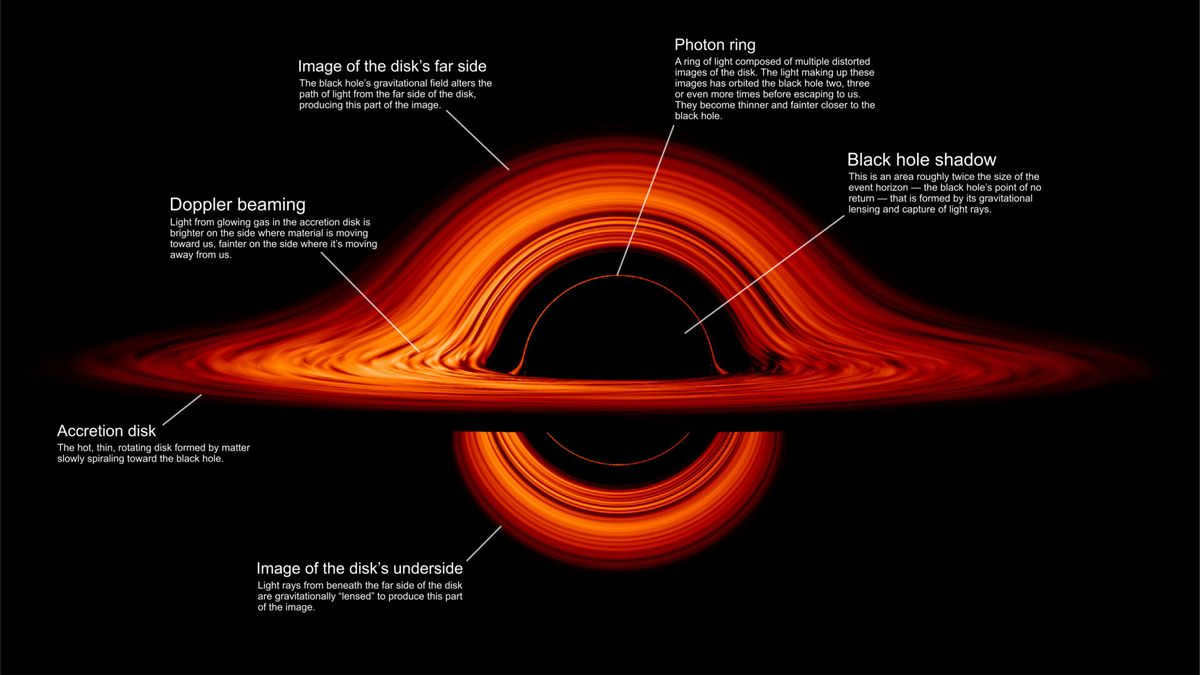
Amanda Gefter, a correspondent from BBC Earth, proposes in her highly popular article from 2015 that when an individual reaches the event horizon, they will experience a division of reality. In one scenario, they will be immediately destroyed by the intense heat, while in the other, they will descend into the depths of the black hole, remaining alive and unscathed.
The main idea is that, based on the laws of physics, it is impossible for any information carrier (such as a human body or any physical object) to pass through the event horizon and must stay outside of it. If the information carrier were to cross the event horizon, all the information it holds would be lost to our world. However, according to the principles of physics, it is also necessary for a human being or any other object to be able to safely traverse the event horizon without encountering any harmful or unusual phenomena. This is essential to ensure that the General Theory of Relativity remains intact.
Time and space infinitely distorted
As an individual delves further into the abyss, the fabric of space-time continues to contort and reaches an infinite curvature at its core. This juncture is referred to as the gravitational singularity. In precise terms, the fundamental notions of “space” and “time” lose all significance within it, rendering all the established principles of physics, which rely on these two concepts for explanation, obsolete.
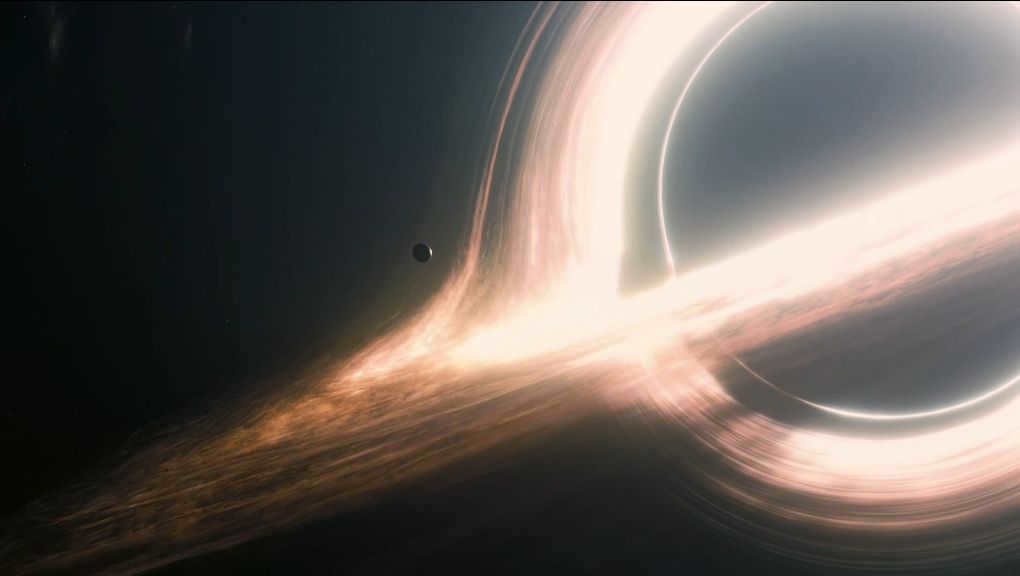

Kip Thorne, the scientific consultant for Christopher Nolan’s iconic film and the author of the book “Interstellar. Science Behind the Scenes,” draws a comparison between the curvature of space and an ant on a trampoline. Envision a scenario where an ant (representing a human) resides on a child’s trampoline (symbolizing the Universe), with a heavy stone resting in the center. Just as the trampoline’s surface sags under the weight of the stone, the space in our Universe also warps near massive objects. Additionally, time, which is intricately linked to space according to the equations of the Theory of Relativity, also experiences this warping effect.
It’s not entirely dark
Based on Stephen Hawking’s hypothesis, black holes are not entirely “black” – in reality, they emit particles. In truth, a black hole does not possess a specific color: this common terminology simply suggests that anything that enters it cannot escape. We can only perceive it when there is illuminated matter in its vicinity (such as gas or a nearby star whose material is attracted by the immensely massive object). Through the detection of gravitational waves, we are able to visually detect the merging of two black holes.
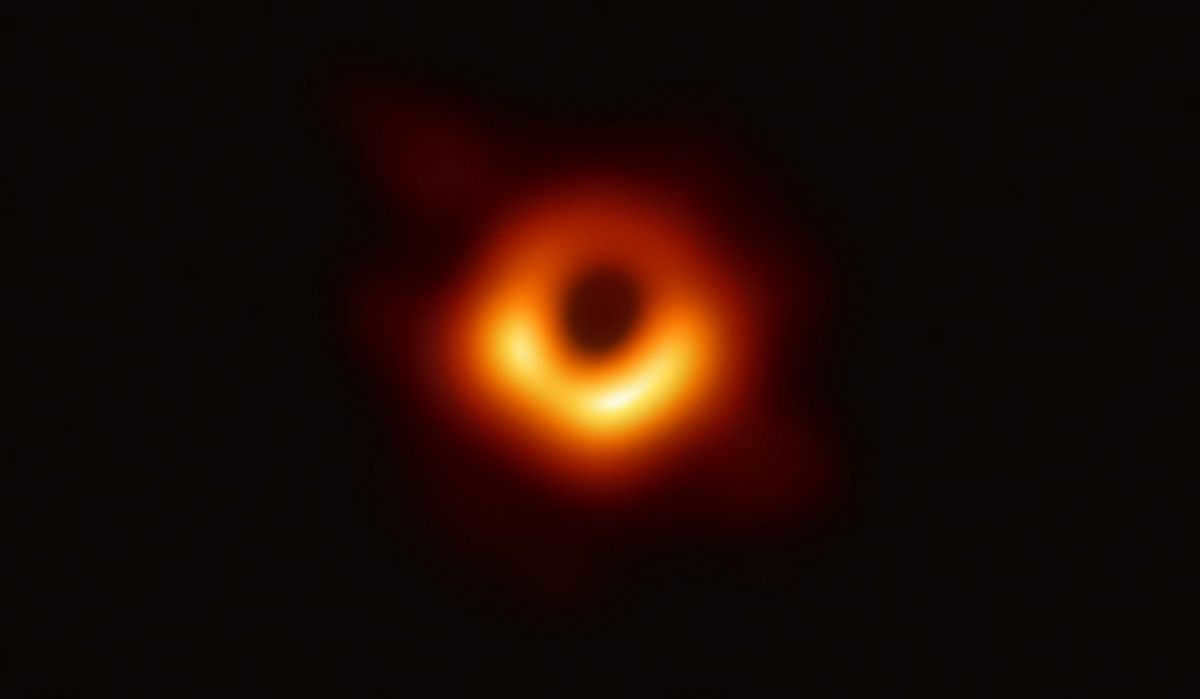
The initial photo of a black hole, obtained through the Event Horizon Telescope project, was the outcome of numerous years of analyzing information accumulated by radio telescopes positioned all over the globe. The colors depicted in the image are not actual, as the observations were made in the radio frequency range, which is invisible to the naked eye.
Stay updated with the most captivating news and fascinating facts on our Telegram channel!

As a news editor and writer, I have always been fascinated by the wonders of space and astronomy. This childhood interest has evolved into a full-blown professional passion. In my work at The Universe. Space. Tech, I am responsible for crafting news articles, verifying facts, and producing compelling analytical content.
Undoubtedly, the subject of black holes in space piques the interest of all individuals. Up until now, very little information has been available regarding them. However, today marks a significant milestone as scientists have successfully captured an image of a black hole. So, what did this breakthrough discovery unveil? Surprisingly, it turns out that all those depictions of black holes that you may have come across on the Internet or in your astronomy textbook were simply artistic interpretations. In reality, they were mere speculations formulated by scientists based on their calculations. The enigma surrounding black holes has long baffled the scientific community, leaving them without any concrete answers. This is precisely why the recent unveiling of the first-ever genuine photograph of a black hole located in the M87 galaxy carries immense significance: it provides the initial empirical evidence confirming the existence of these mysterious entities.
What is it all about.
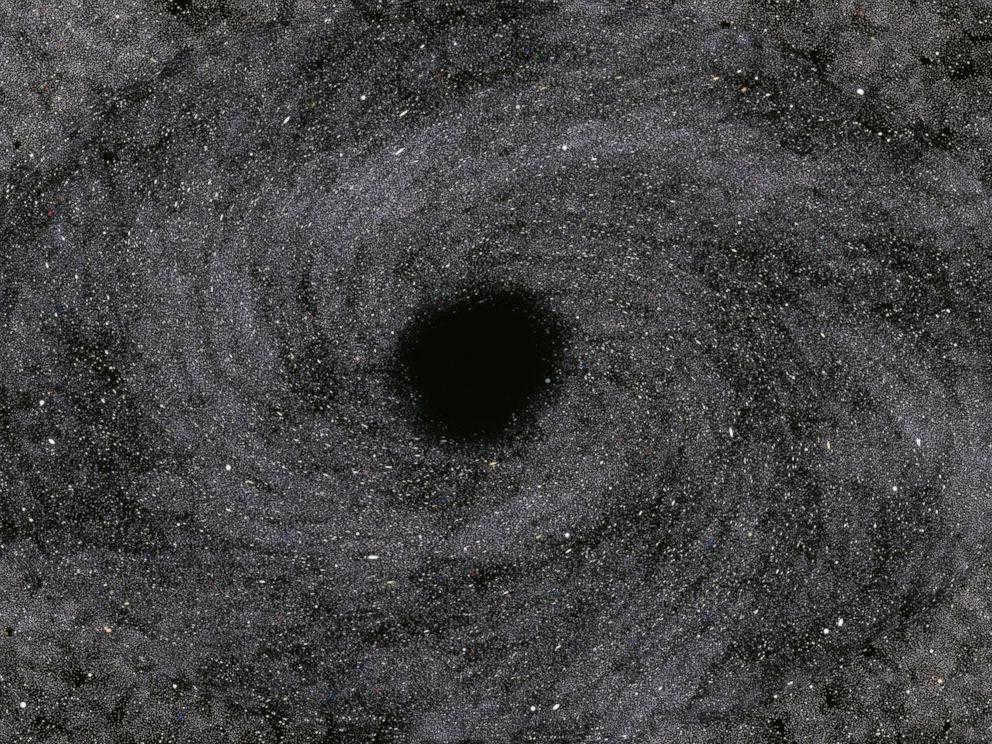
Although the term is widely recognized, many of us (unless we’re astrophysicists) may not have a clear understanding of what a black hole actually is. A black hole is an incredibly massive object that possesses such intense gravity that it pulls everything, including light, into its center. Still confused? Imagine a bowling ball placed on a trampoline: it creates a deep indentation in the fabric, causing any objects thrown onto it to be drawn inward. In a similar manner, black holes cause a distortion in space and time around them. Even light, which is the fastest thing in the universe, is unable to escape their gravitational pull. The curvature of space is so severe that there is only one direction: downward. This is why black holes are referred to as “black” – or rather, invisible to us – because no light can break free for us to observe them.
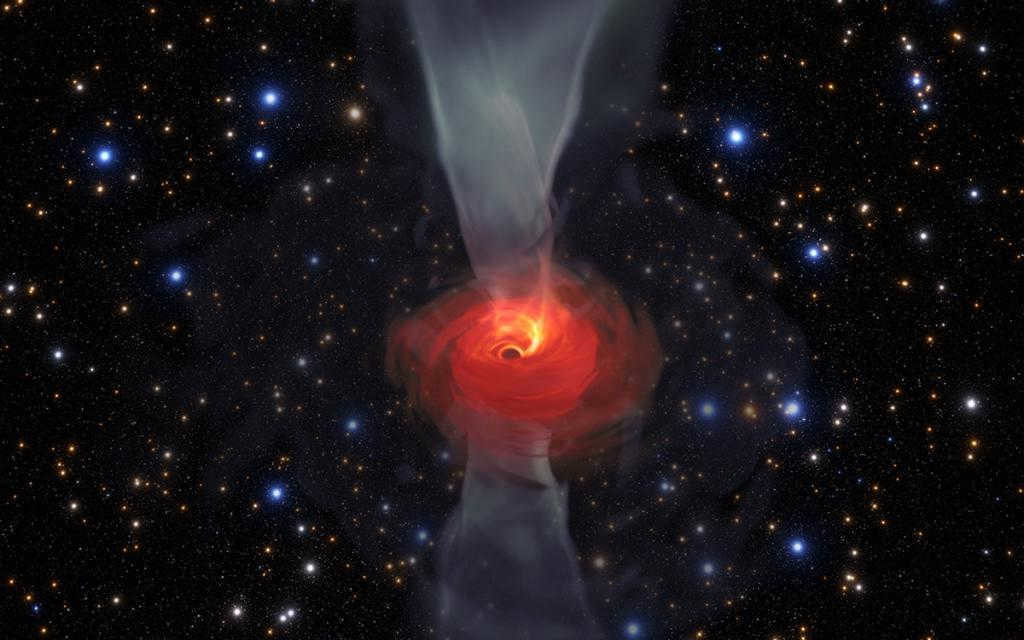
What is the structure of a black hole?
So, what exactly is a black hole? A black hole is formed when matter is condensed into an extremely small space. One example is when massive stars exhaust their fuel and undergo gravitational collapse, resulting in the formation of a black hole.
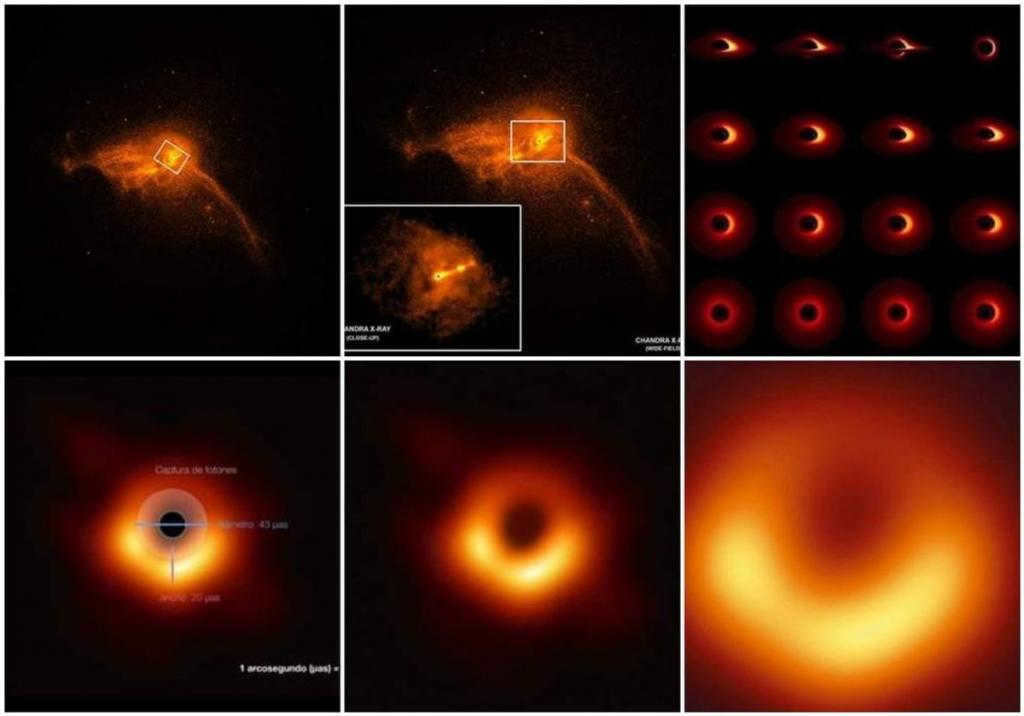
The black hole M87, which was successfully captured in an image, most likely originated from massive clouds of hydrogen gas that underwent gravitational collapse.
What lies within a black hole?
While black holes themselves are not observable, their existence is inferred from the behavior of surrounding objects, such as stars, which interact with their gravitational pull. These objects situated within the safety zone are not engulfed by the black hole, but are still influenced by its force. However, matter that crosses the point of no return, known as the event horizon, becomes trapped within the black hole and cannot escape its grasp.

However, scientists are still in the process of unraveling the mysteries of the content within the black hole. According to gravitational theory, when hydrogen from a collapsing star enters, it is compressed into a “singularity” at the center. Nevertheless, the true nature of what occurs inside remains unknown. Therefore, the interior of a black hole does not resemble the depictions often seen in movies. In reality, there is nothing between the event horizon and the singularity except for empty space, which is subject to incredibly intense gravitational fields.
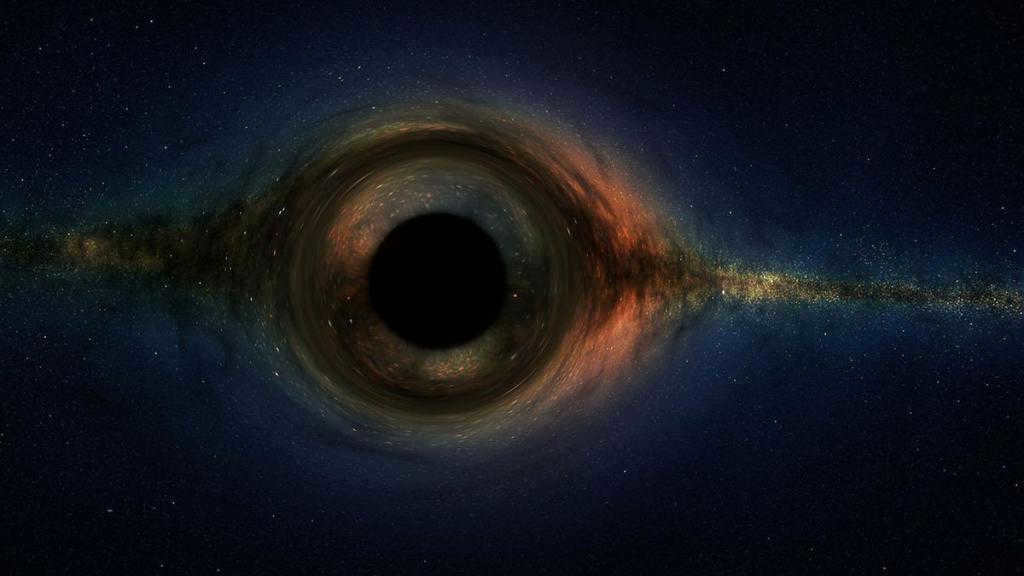
The fate of matter that enters a black hole is still a topic of discussion. There is a hypothesis that suggests that matter falling into a black hole essentially ceases to exist for external observers and cannot be quantified. Hawking dedicated his efforts to exploring this concept until his passing in March of last year, with his final paper on the subject being published by his colleagues in December 2018.
What insights can we gain from the latest image of a black hole’s interior?
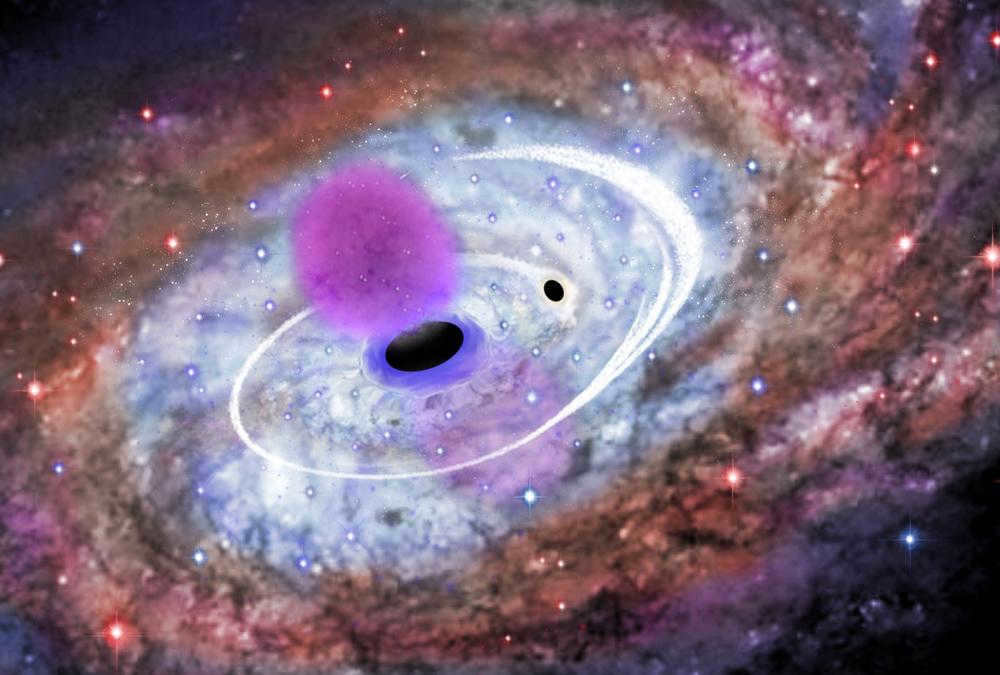
The recent depiction of M87, which goes beyond a mere snapshot and instead combines information from eight different observatories across the globe, offers the initial proof to either corroborate or challenge the concept of black holes.


Scientists who require improved examinations of Einstein’s theory of gravity, or those searching for proof to disprove that theory, will be interested in what the resultant image can elucidate.
Within the image, the luminous rings represent an accretion disk, a swirling mass of gases situated directly in front of the event horizon. The void in the center is the black hole’s “shadow.”
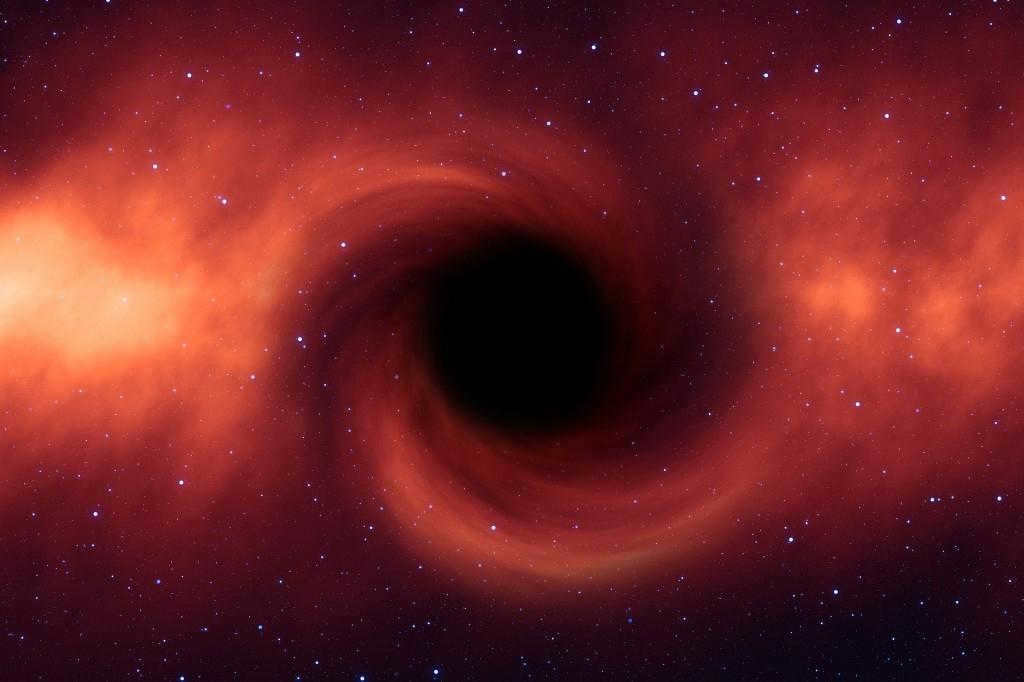
However, examining the dimensions and characteristics of the picture will provide astrophysicists with unprecedented data to enhance our comprehension of the mechanisms of black holes. Conceivably, they may uncover the enigmatic occurrences within these celestial entities.
